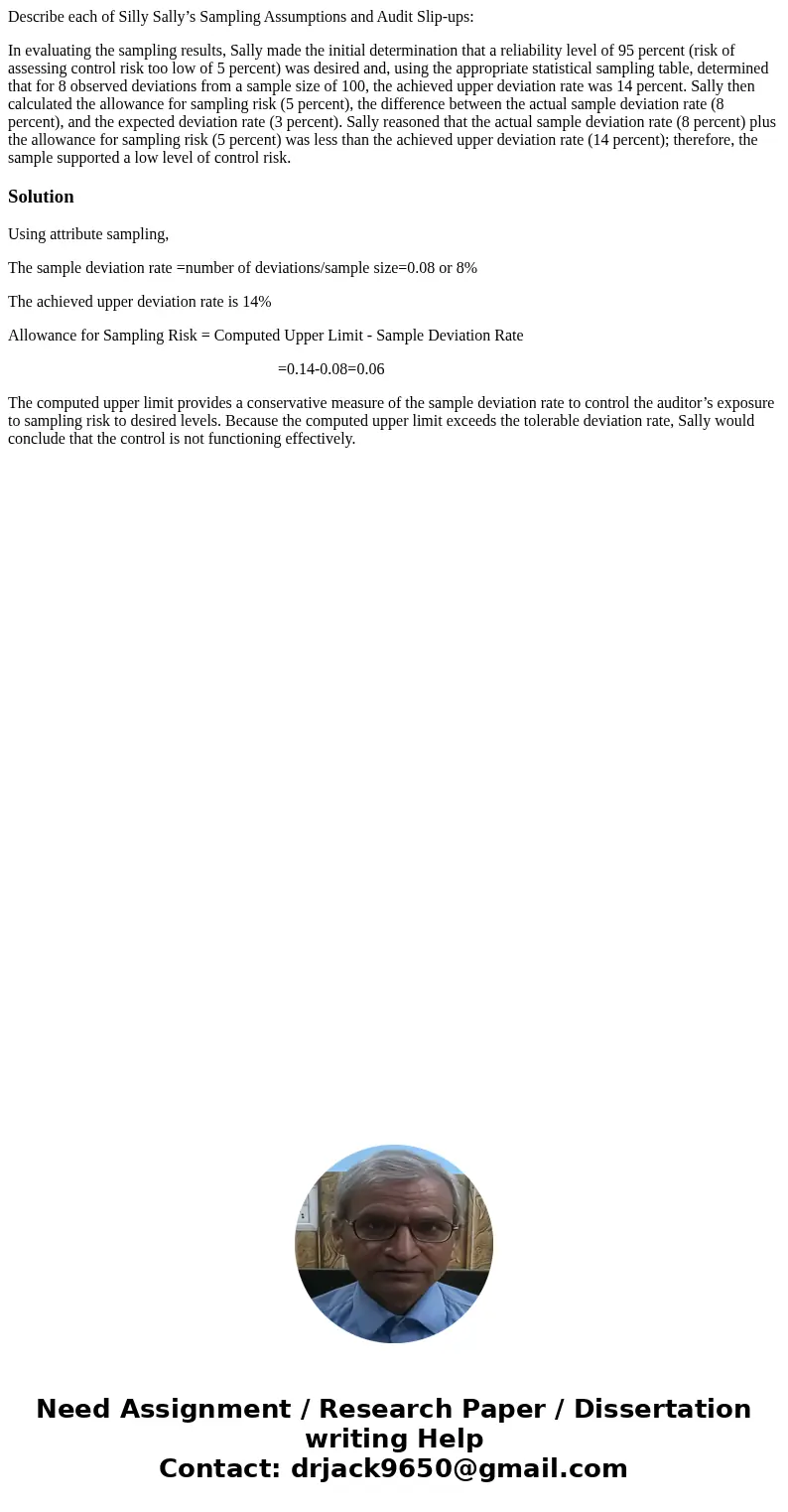Describe each of Silly Sallys Sampling Assumptions and Audit
Describe each of Silly Sally’s Sampling Assumptions and Audit Slip-ups:
In evaluating the sampling results, Sally made the initial determination that a reliability level of 95 percent (risk of assessing control risk too low of 5 percent) was desired and, using the appropriate statistical sampling table, determined that for 8 observed deviations from a sample size of 100, the achieved upper deviation rate was 14 percent. Sally then calculated the allowance for sampling risk (5 percent), the difference between the actual sample deviation rate (8 percent), and the expected deviation rate (3 percent). Sally reasoned that the actual sample deviation rate (8 percent) plus the allowance for sampling risk (5 percent) was less than the achieved upper deviation rate (14 percent); therefore, the sample supported a low level of control risk.
Solution
Using attribute sampling,
The sample deviation rate =number of deviations/sample size=0.08 or 8%
The achieved upper deviation rate is 14%
Allowance for Sampling Risk = Computed Upper Limit - Sample Deviation Rate
=0.14-0.08=0.06
The computed upper limit provides a conservative measure of the sample deviation rate to control the auditor’s exposure to sampling risk to desired levels. Because the computed upper limit exceeds the tolerable deviation rate, Sally would conclude that the control is not functioning effectively.

 Homework Sourse
Homework Sourse